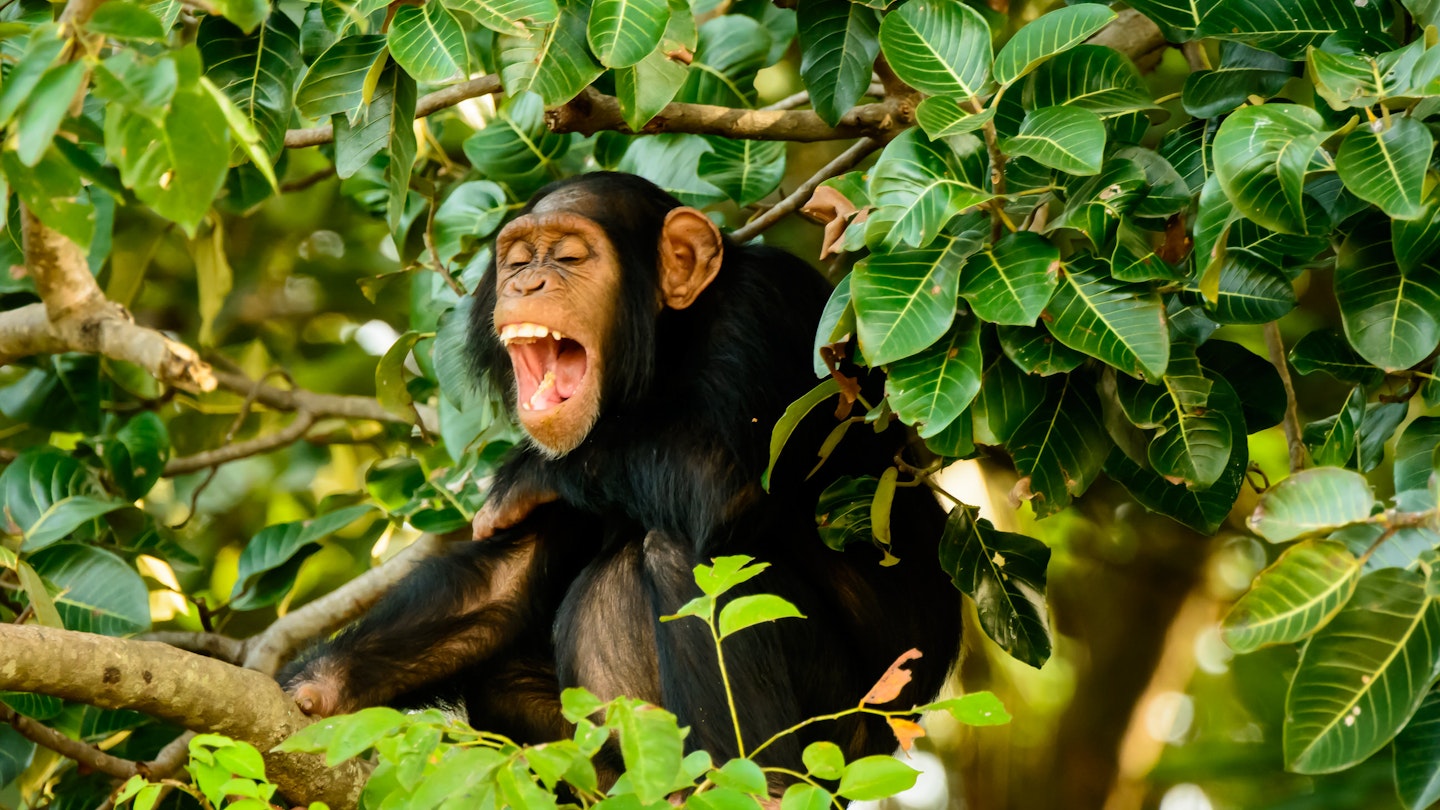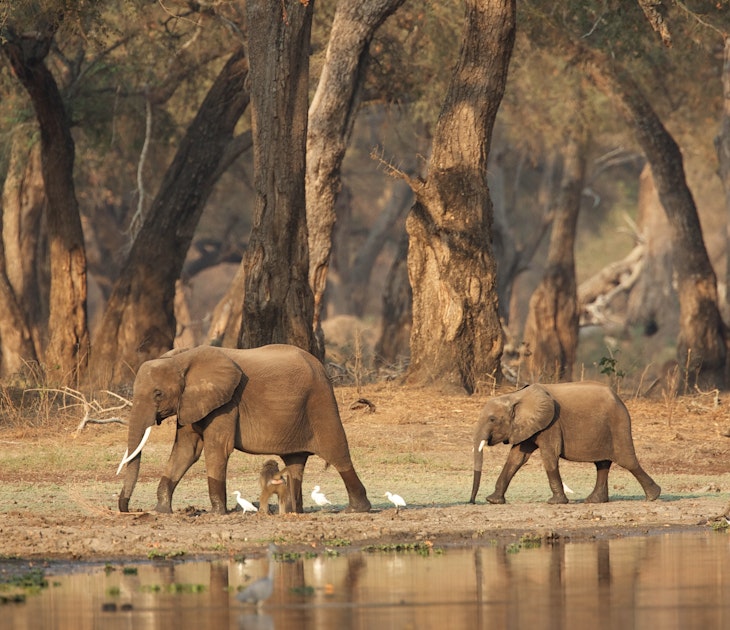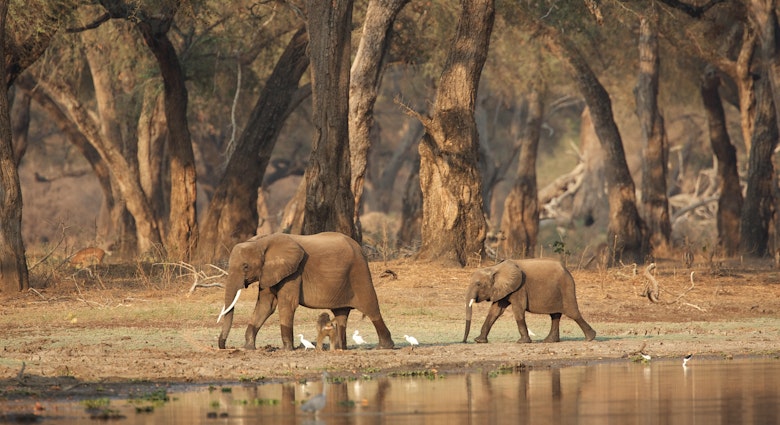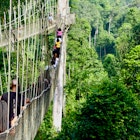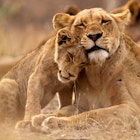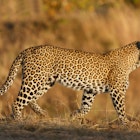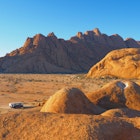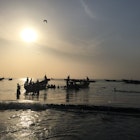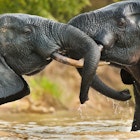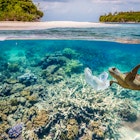In the heart of The Gambia, on a bend in the country’s eponymous river, lies the River Gambia National Park. This vast area of protected forest is home to the Chimpanzee Rehabilitation Project, a conservation organisation – founded 40 years ago this year – which protects more than 100 chimps living wild on three islands. Follow Joseph Reaney as he visits the project and has unforgettable encounters with our species' closest relative.
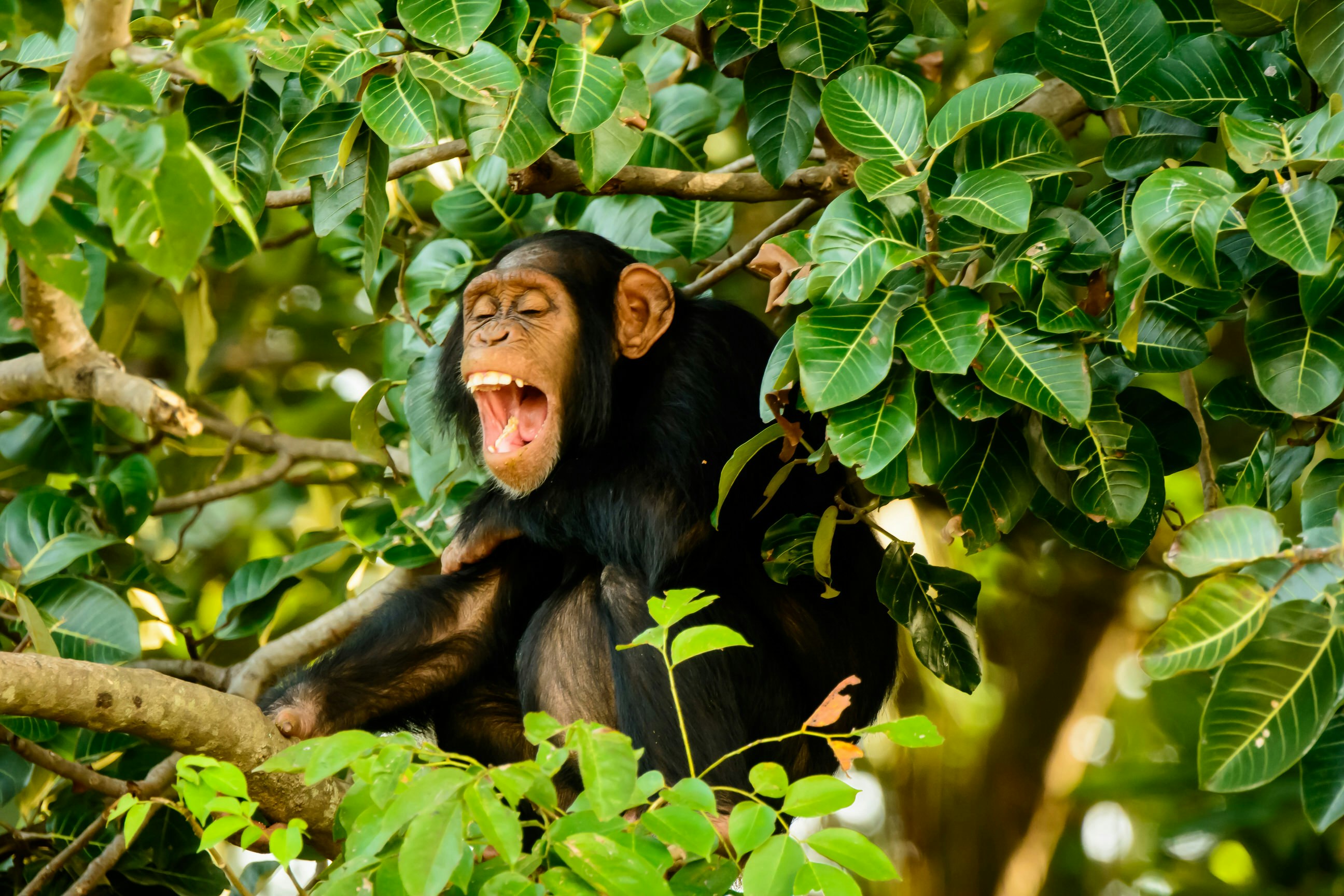
Cruising the River Gambia
From chaos into calm. My journey from the capital Banjul has been long, hot and sweaty, from the cramped gelly-gelly minibuses to the overloaded donkey carts. But now, as the motorboat pushes off from the banks of the river in Kuntaur, a sense of tranquility washes over me. For the next 48 hours, I am leaving behind the hustle and bustle of the mainland and venturing into one of West Africa’s wildest national parks.
The River Gambia National Park is a haven for wildlife, not only chimps but also hundreds of rare, beautiful bird species. As if to prove its credentials, the ornithological encounters start almost the moment I set foot in the boat, from elegant monochrome pied kingfishers to dazzling green bee-eaters, wading pink-backed pelicans to soaring long-crested eagles. With so much to distract me during the 45-minute journey, it hardly registers when a collection of wooden structures slowly emerges at the water’s edge. I’ve arrived at the Chimpanzee Rehabilitation Project (CRP).
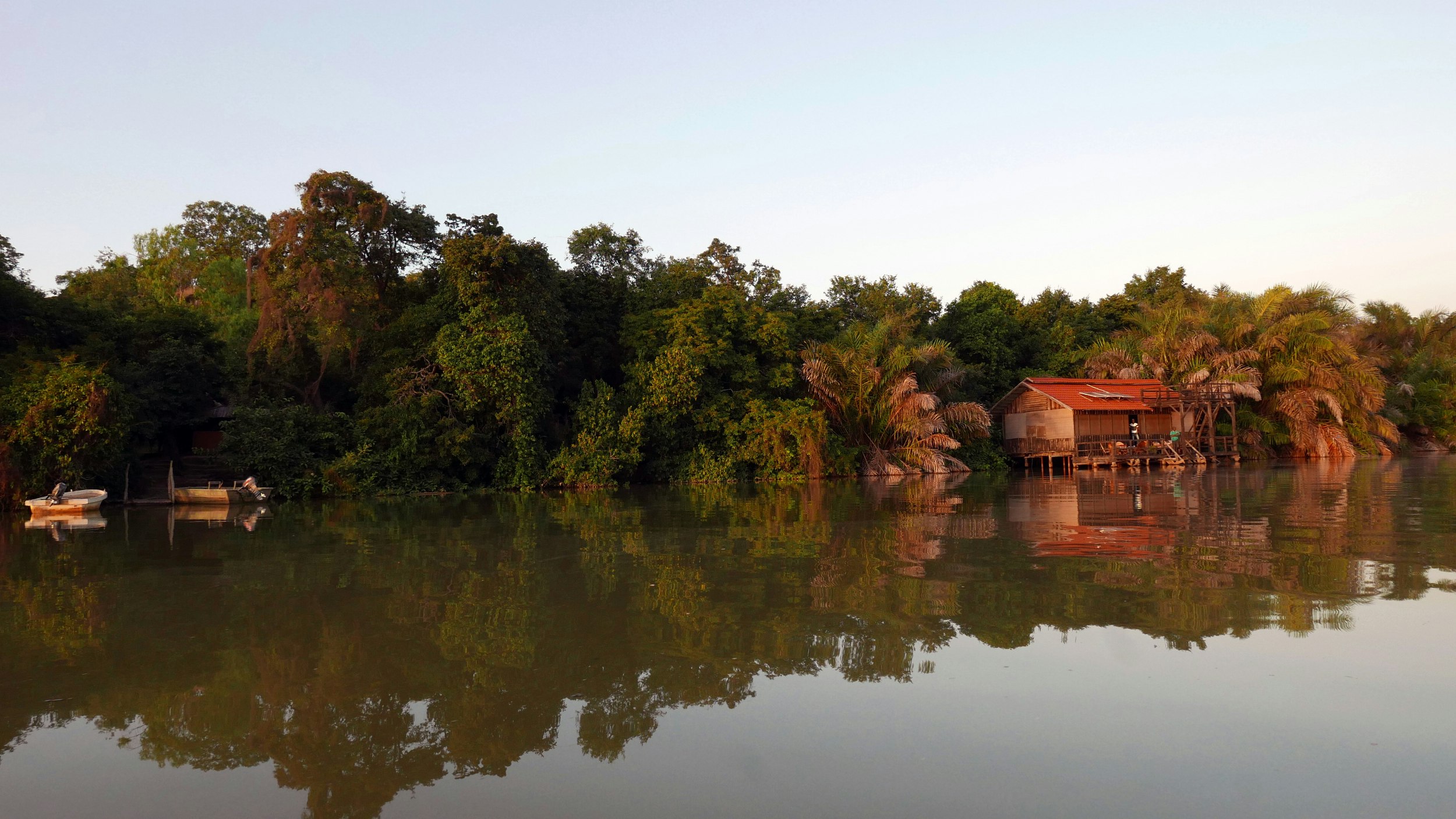
I get out at the jetty of the riverside ‘water house’, the common room where guests come to dine, drink and kick back, then climb the steep forested path up to my safari tent. There are four tents altogether, each built overhanging the cliff edge. The panoramic views are extraordinary, with untouched forest on both sides and the main island – home to two of the larger chimpanzee social groups – perfectly framed in front. As I stand here, it is incredible to think that this whole project is the legacy of just one chimp: Lucy.
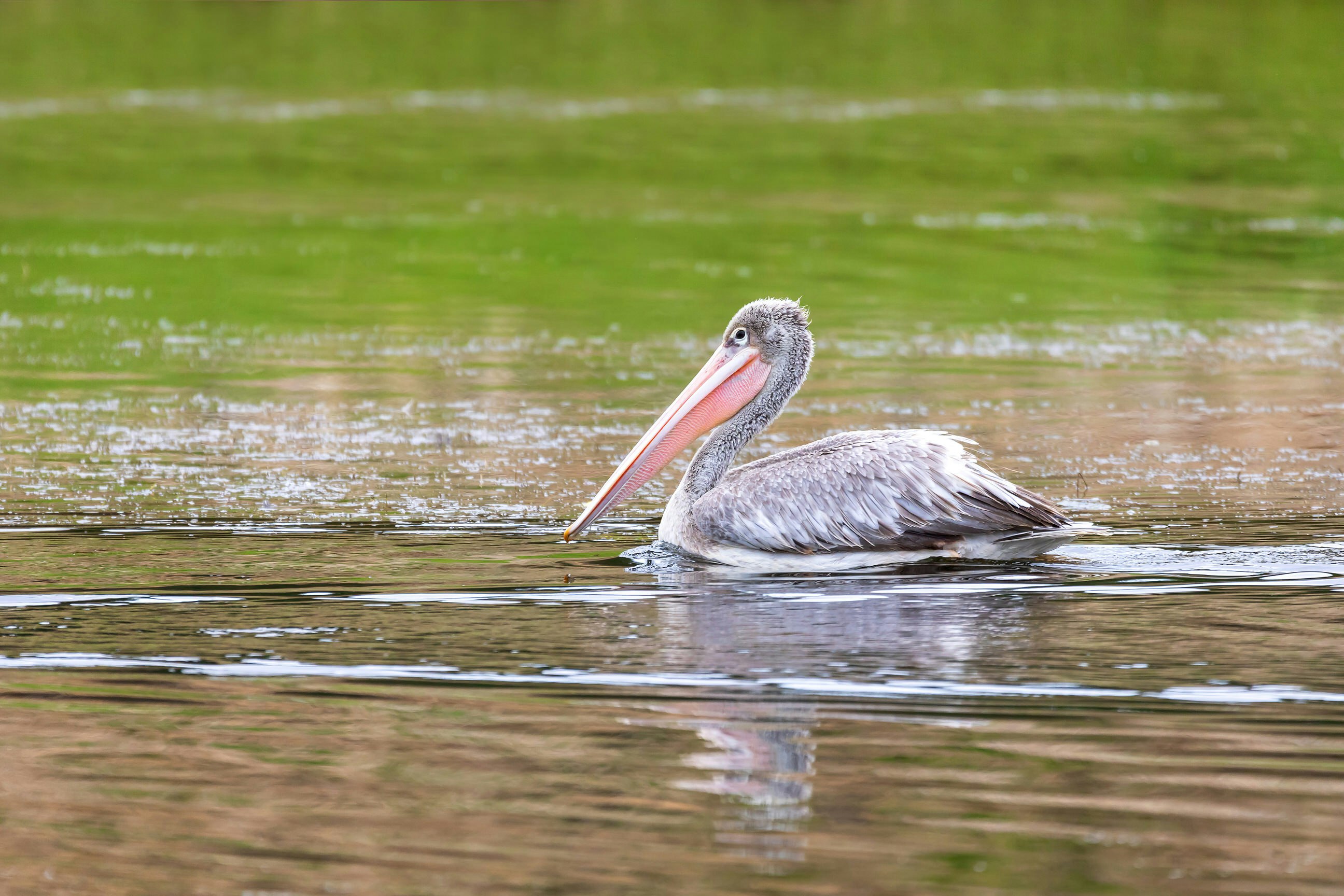
The origins of the project
You may not have heard of Lucy, but she was a bit of a celebrity in the 1970s. Raised as if a human child by American psychotherapists, Lucy learnt to dress herself, serve tea and use sign language. She even had a pet cat. But as she reached adulthood and grew in strength, it was no longer safe to keep her among humans, so it was decided to re-wild her in The Gambia – under the care of psychology student Janis Carter.
Forty years on, Janis remains in The Gambia. As for the habitat reserved for Lucy, well, it’s what I’m looking at now. In 1979, Janis moved onto the main island with Lucy, along with a small group of eight other chimps. But, as she recalls, the early years weren’t easy. “Once I took Lucy, I knew I wouldn’t be able to move off the island at all, as I had to be with her constantly. The first year-and-a-half was a big transition. And probably even harder for Lucy than it was for me, as at least I could comprehend what we were doing.”
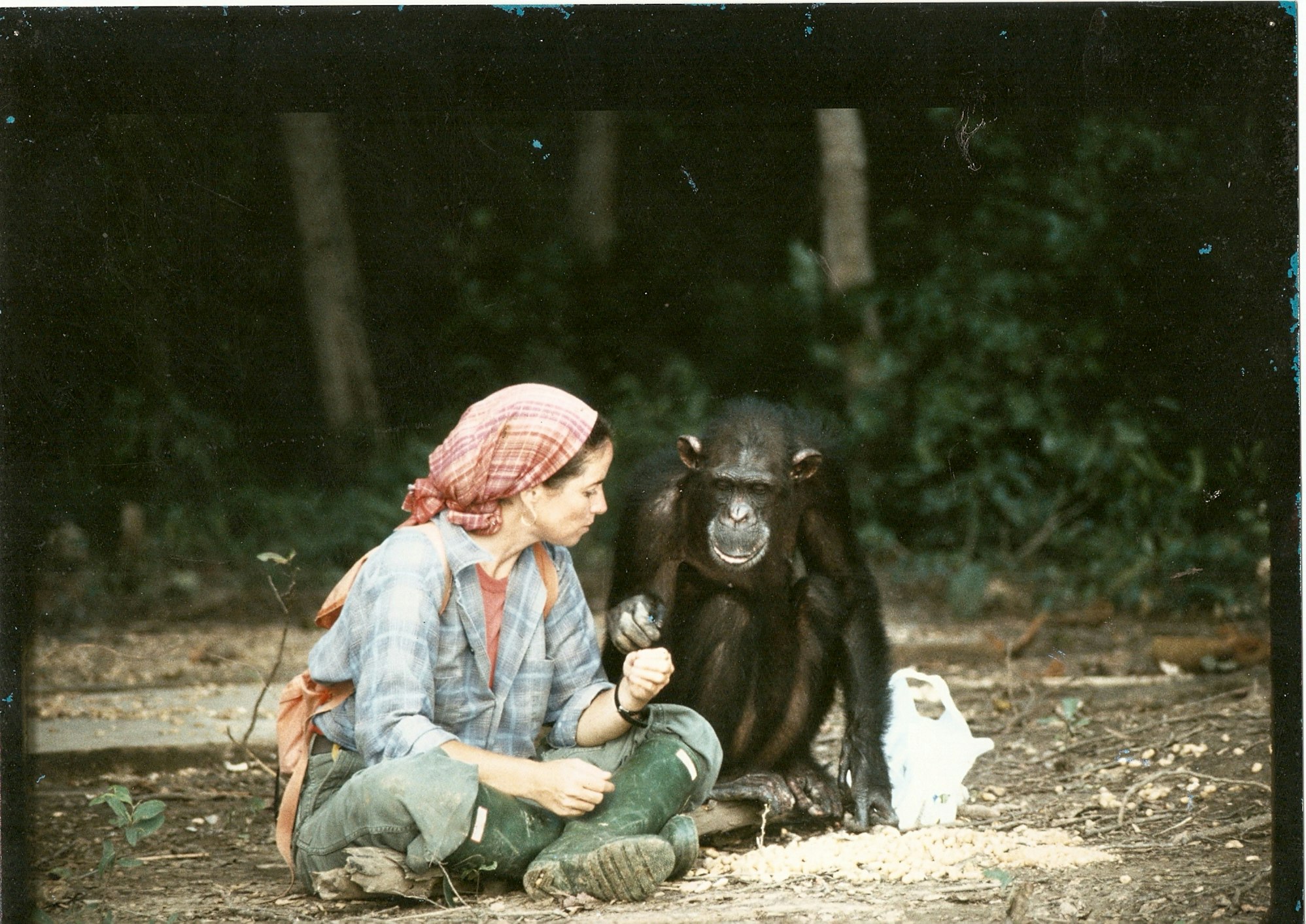
Despite the difficulties, they both persevered. Janis ultimately devoted six years of her life to living on the island with Lucy and the others. But following an unexpected attack from Dash, one of the younger male chimps, she realised the power dynamics of the group had changed. It was time to leave the island for good.
Scroll forward to 2019 and the project has dramatically evolved. For one, there is no longer any physical contact between humans and chimps. “What we do now is what most conservation organisations would do to protect a wild population of chimps,” explains Janis. “We’ve got an education component, a research component and a development component, with the latter helping villagers living near to the national park. And we have an eco-tourism component, which helps us generate revenue for running the project so it is self-sustainable.”
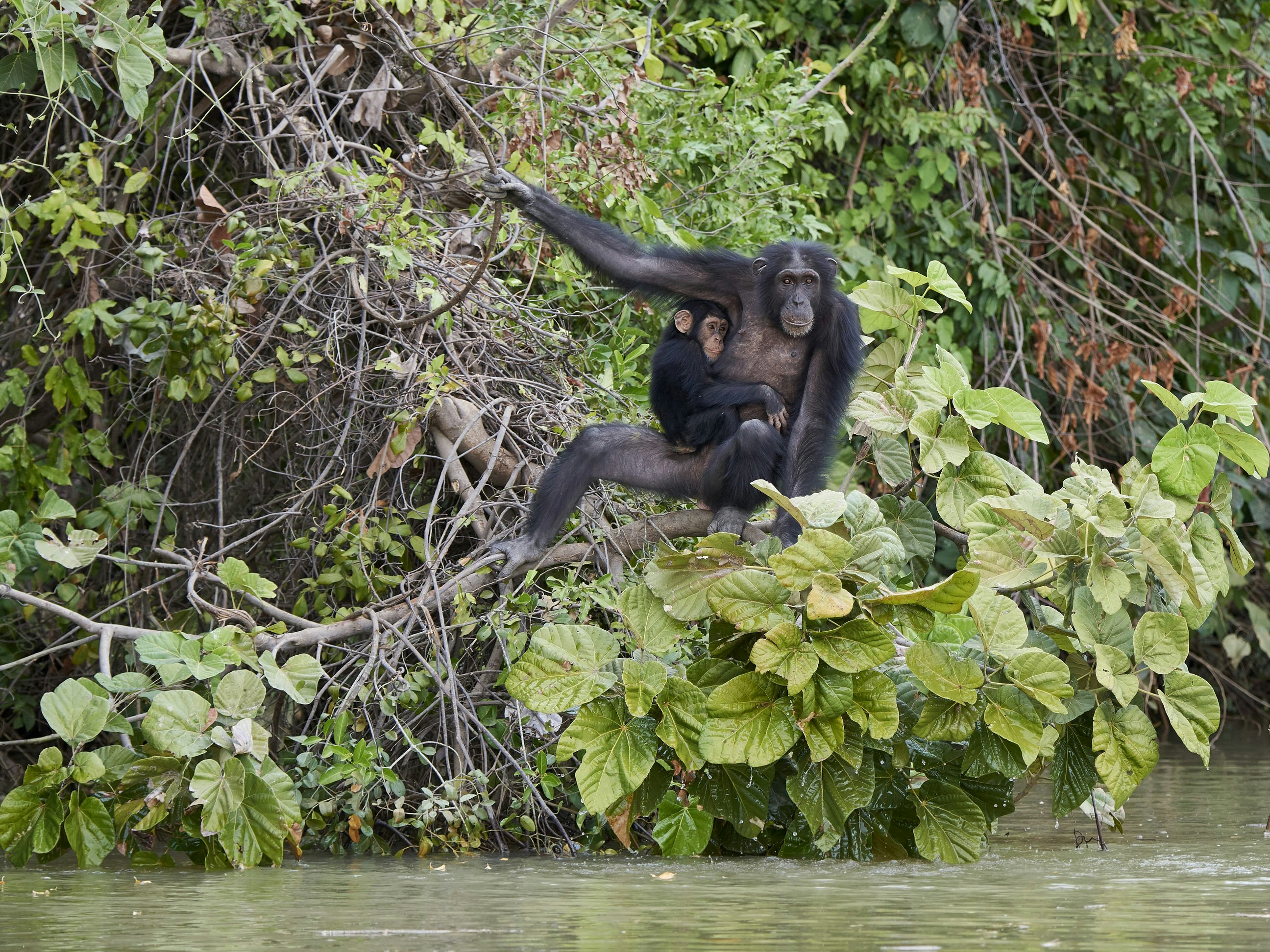
The chimp-viewing experience
It is this eco-tourism component that allows visitors to stay in the camp and take boat trips out to view the chimps. It’s the reason I am here. So, as I step off the jetty and onto the sturdy aluminium boat, I’m excited.
We head out in the wake of the 'feeding' boat. The chimps here are provided with supplementary food because, as Janis explains, the group has reproduced over the years. “We must protect the island habitats to ensure they can support all the chimps plus other primate and mammal species,” she says. “Feeding also allows us to monitor the chimps’ physical conditions, then use this information in our project management.”
As the chimps make their way down to the water’s edge to consume the fruits and vegetables, we cruise closer to the main island, stopping around 20m from the shore so we don't disturb them. Then we sit and watch. It’s a truly magical experience. And, it occurs to me, a very rare one; how often do you get to see, from such close quarters, wild animals behaving in ways that are natural and uninhibited?
After what seems like no time at all, we sail off along the island to find another chimp group. Then another, and another. Over the course of the next two hours, as we navigate between the three islands that make up the CRP, we see dozens of chimps in various combinations. Each one is fascinating in its own way. There are the bruiser alpha males, confidently chomping on their personal stash of bananas; the fretful mothers, who clasp their young as they scoop water into their mouths; and the hyperactive adolescents, who are simply too busy swinging between the branches to think about dinner. It’s not only chimps either. We are lucky enough to see hippos on sandbanks, baboons lazing on tree branches and colourful birds flying overheard.
When we return to the camp, I also hear stories of crocodile and manatee sightings during previous boat trips. So enamoured with what I have seen – and keen to see more – I sign up to do it all again the next day.
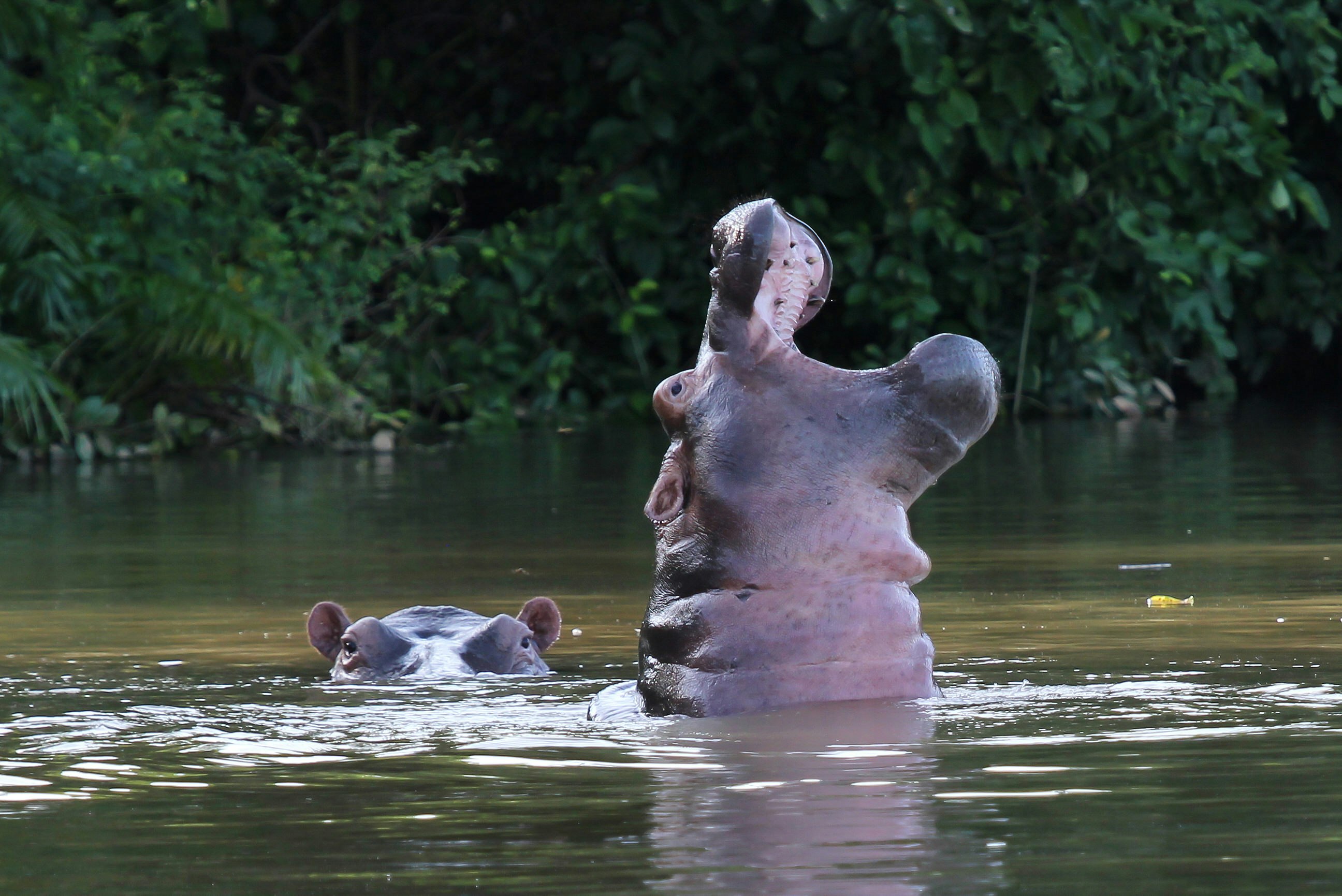
A host of wildlife encounters
Although the chimpanzees are the undoubted stars of the River Gambia National Park, there are also plenty of other wildlife adventures to enjoy. In addition to the boat tours around the island, the CRP also offers several different excursions on the mainland, from early morning nature hikes – where you can spot warthogs, marmosets, antelopes, aardvarks and vultures – to nocturnal bush baby walks. There is also a boat trip to Sama Boi Konko, the high cliff from which it’s said the country’s last elephant fell to its death. At 53m elevation, it is the highest point in The Gambia, and offers spectacular panoramas of the three river islands.
As well as heading out to see wildlife, I soon find that wildlife comes to see me. The forested trails of the CRP’s safari camp are regularly criss-crossed by playful green monkeys and slithering puff adders. And my relaxing afternoons on the veranda are often shared with an inquisitive redshank or a scuttling monitor lizard.

Looking to the future
The future of the CRP is not certain. Tourism in The Gambia has had its ups and downs, with everything from the Ebola crisis (in nearby Guinea, Sierra Leone and Liberia) to political strife affecting visitor numbers, and this makes efforts to be self-sustainable a challenge. But right now, the biggest concern is the collapse of Thomas Cook. “A lot of tourists came into this country through them,” explains Janis. She’s already had cancellations for October and November.
Yet despite the setbacks, Janis continues to look to the future, with ambitious plans to expand the territory of the CRP. “There is a large population of red colobus monkeys in the area in which our camp exists, and this species is actually more endangered than the chimpanzee,” she reveals. “The government has been privatising a lot of forest parks, so I have been working with the wildlife department to get this forest under our control.”
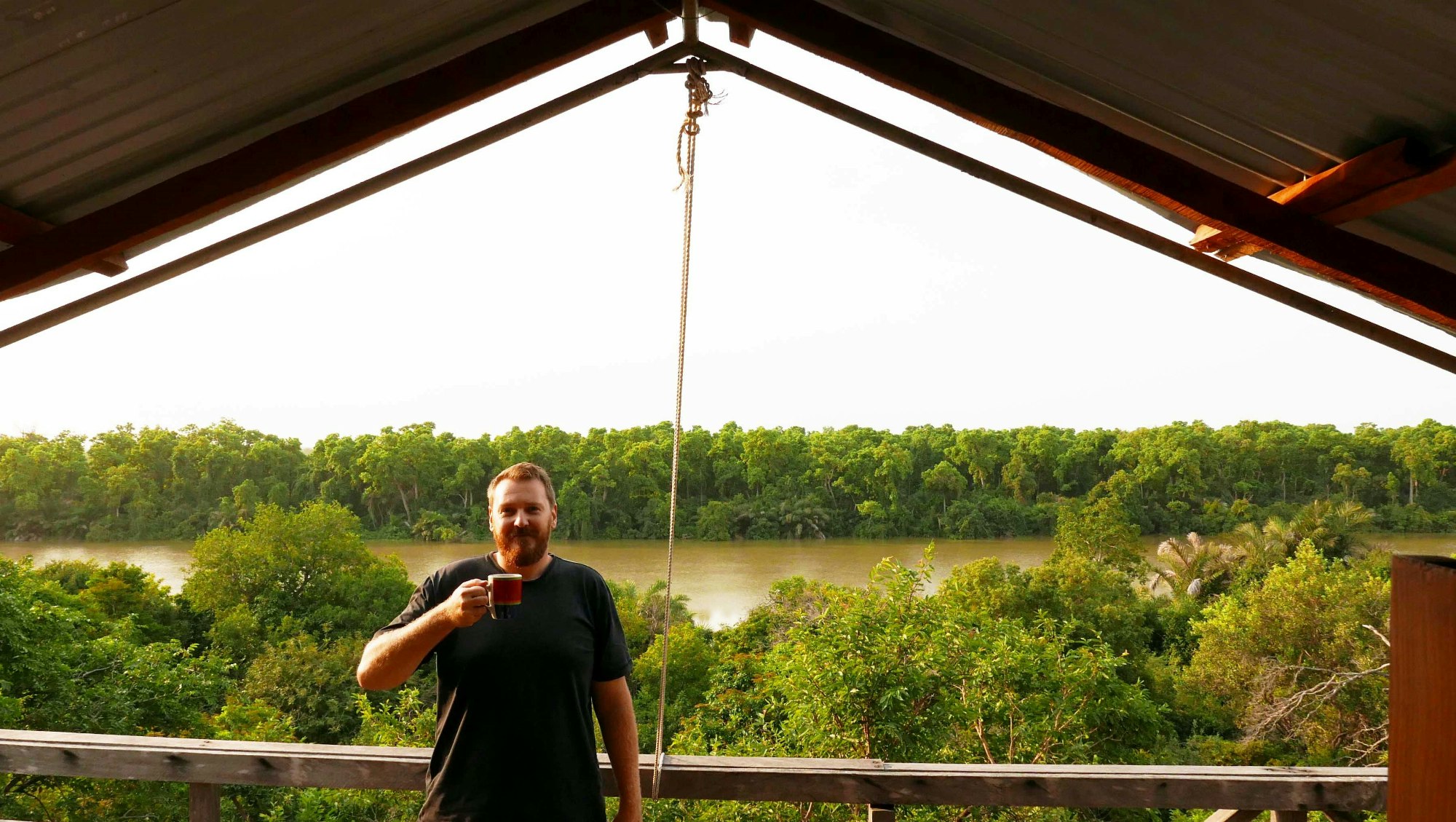
As for the camp, Janis is adamant that it won’t be enlarged. “This is a very fragile ecosystem, and one of The Gambia’s last remaining untouched riverine gallery forests, so I don’t want to expand beyond four tents. We can control the impact this has on the chimps and the ecosystem. In all the years I have been here, the view from the water house veranda has not changed, and a lot of effort goes towards trying to sustain that. The continuity is remarkable. Besides, I think the smaller setup provides a far better experience for our guests.”
As I sit on the veranda of the water house, looking across the river to the lush forested island – the same view Janis first experienced four decades ago – I could not agree more.
You may also like:
Africa's largest wildlife migration: the bats of Kasanka National Park
Best beaches in The Gambia for your next coastal retreat
Beyond the beaches: exploring The Gambia

